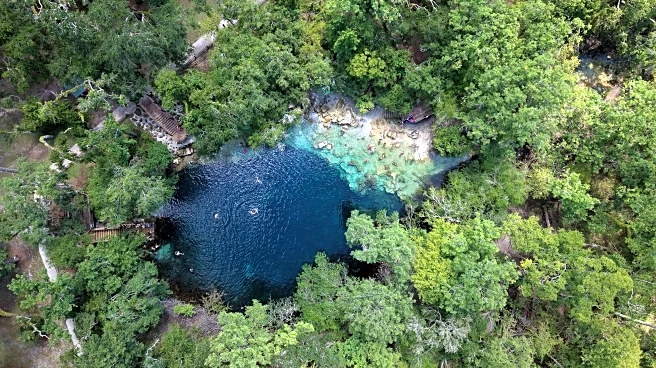What's Happening?
The collection of paleoclimate records and reconstructions provides essential data for understanding Earth's historical climate patterns. Researchers like Jianping Duan and Vasileios Gkinis are contributing to this field by analyzing ice core records and historical climate data. These efforts aim to refine climate models and improve predictions of future climate variability. The datasets are derived from field measurements, laboratory analyses, and model-based reconstructions, offering a comprehensive view of past climate dynamics.
Why It's Important?
Paleoclimate data are crucial for interpreting current climate changes and predicting future trends. By understanding historical climate variability, scientists can better assess the natural drivers of climate change and refine models used for policy-making and environmental planning. This research supports global climate action initiatives and informs strategies to mitigate climate impacts.
What's Next?
The ongoing research in paleoclimate records is expected to enhance the accuracy of climate models and projections. As datasets become more detailed and accessible, they will support international efforts to address climate change. Researchers are focusing on expanding open data resources and improving analytical methods to generate high-resolution climate datasets.
Beyond the Headlines
The integration of paleoclimate data into climate models represents a significant advancement in climate science, offering a long-term perspective that is essential for sustainable environmental management. This research underscores the importance of interdisciplinary collaboration in addressing complex climate challenges.












